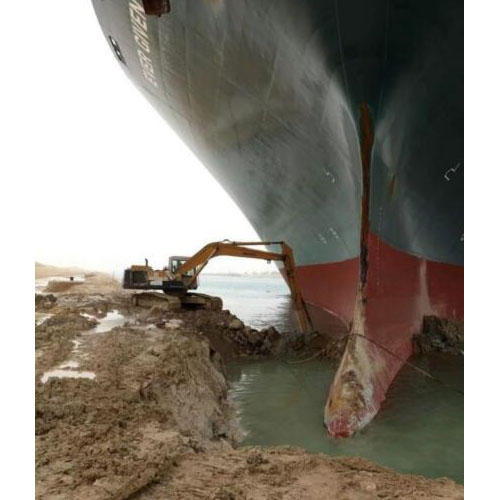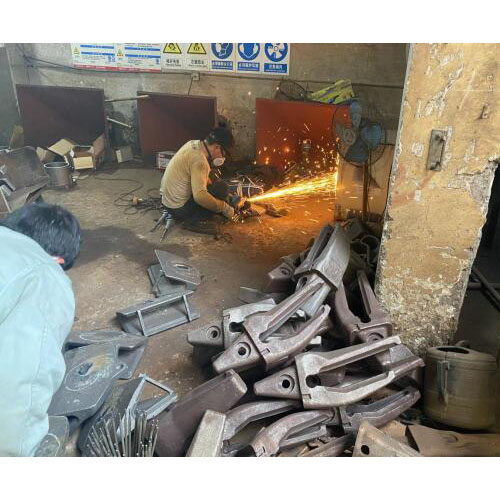What Are Bucket Teeth Wear Resistance Measurements?
Bucket teeth are an important component in excavators and must be able to withstand abrasive and impact wear. Bucket teeth must be toughened using a heat treatment procedure to reduce replacement costs.
Choosing the correct bucket teeth is heavily influenced by the sort of machine you're using and the digging circumstances you'll face. Choosing the incorrect tooth profile might result in machine downtime and increased maintenance expenses.
Toughness
Bucket teeth are an essential component of any excavator. They assist the bucket in digging through the dirt and can be built of a number of materials. They are, however, frequently worn out. This is due to the way they interact with the dirt and rock they are digging through.
This is a common issue among contractors. Fortunately, there are techniques to make your bucket teeth last longer.
First, bucket teeth with the proper hardness and impact strength can be found. Scallops on high-quality bucket teeth protect and strengthen the front end of the tooth. They also self-sharpen as they wear, allowing them to penetrate the dirt more effectively.
Second, you can select the cutting edge that is best suited to your unique digging requirements. Bolt-on and weld-on edges are typical, but serrated or teeth bars are other options. Choosing the proper edge option can increase your productivity and save you money on another bucket.
Third, bucket teeth that have been coated with a wear-resistant coating can be used to reduce wear and extend longevity. TLC increases the toughness and endurance of your bucket teeth, perhaps extending their service life by ten times.
Fourth, you can select bucket teeth manufactured of alloy cast steel, which has a high strength-to-toughness ratio. This material can be quenched with water to harden and toughen it, extending the life of your bucket teeth.
This is a critical step since it can increase the hardness and durability of your bucket teeth while also preventing them from wearing out prematurely. It is also a low-cost method because it saves both time and money.
High manganese steel and low carbon steel are the most widely used Mini excavator bucket teeth. Under work-hardening circumstances, high manganese steel is noted for its remarkable toughness and wear resistance. High chromium cast iron and low carbon martensitic steel are the other two bucket tooth materials. They each have their own distinct personality.

Plasticity
Excavator bucket teeth are critical for ground penetration in the field of earth moving technology. They are subjected to significant abrasion and impact during operation, and they must have great wear resistance measures in place to survive as long as possible.
Excavator bucket teeth have traditionally been made from various metal materials through the sand casting and forging processes. Sand cast bucket teeth are less expensive, however they are not as high in quality or shape. Forged bucket teeth, on the other hand, are more exact and of greater quality, but their production costs are more than those of precision castings.
The material used to make excavator bucket teeth should be able to handle a variety of dynamic loading events, therefore it should have a high tensile strength, ductility, and corrosion resistance. It must also be able to withstand the impact of sand and other harsh materials.
The wear resistance of bucket teeth is critical as an important component of excavators since it can affect the service life and performance of the entire machine. As a result, the material selection process should be thoroughly scrutinized to guarantee that the bucket teeth are composed of long-lasting materials.
Several investigations on the materials used to create bucket teeth for earth moving equipment have been conducted [4-9]. Some of these studies are lab experiments, while others compare lab tests to outdoor tests.
According to the findings of these tests, bucket teeth are very durable and have a long usable life in the field. Under normal functioning conditions, they can survive up to three days.
When digging in thick dirt, however, abrasion and impact will cause bucket teeth to wear down quickly. Bucket teeth will deform to varying degrees depending on the type of material and the depth of mining.
In addition to the foregoing, bucket teeth must be shock and vibration resistant. A variety of studies on the material selection for bucket teeth have been undertaken in order to improve their abrasion and impact resistance, as well as their longevity.
Hardness
The hardness of your excavator's bucket teeth is critical to its durability and performance. The material utilized to build them can have an impact on their wear resistance and impact strength, which in turn affects your productivity and breakout forces.
The toughest Bucket Teeth are the most resistant to wear and will last the longest in any digging circumstances. This is true only if they are appropriately built and their impact resistance is adequately balanced against their hardness.
Heat treating a bucket tooth is one approach to increase its wear resistance. This method, which is both cost effective and environmentally safe, can boost its hardness by up to ten times.
Another way to improve a bucket tooth's wear resistance is to apply hard-face tungsten long-life coatings (TLC). These coats are applied in specified patterns and locations to improve performance and service life.
This process of applying hard-face tungsten long-life coatings is also economical and environmentally benign. It is doable in-house and does not necessitate the use of specialized machinery or high-powered equipment.
The addition of nickel and molybdenum to bucket teeth increases their hardness even further. These materials can help enhance overall wear resistance while also preventing temper brittleness, a fault that develops during the tempering process.
The combination of these two metals has improved overall wear resistance and prevented temper brittleness while maintaining acceptable impact resistance. This can be accomplished by combining heat treatment and cold work hardening processes, which is both cost-effective and environmentally beneficial.
Combining these two metals can also help to reduce the amount of heat needed to heat-treat the steel. As a result, a bucket tooth can be manufactured at a lesser cost than would otherwise be achievable.
Excavator operators may require different types of bucket teeth to meet their digging requirements depending on the application. Tooth bars, weld-on teeth, and serrated edges are among choices. All of them can be used to break up compacted dirt, catch boulders, and remove roots.

Brittleness
The buckets of earth digging and moving equipment such as shovels, drag lines, backhoes, trenchers, and loaders are vulnerable to the erosive impact of the materials they move. As a result, the bucket teeth have a rather short life.
Bucket teeth are often constructed of a metal substance such as high manganese steel or low alloy wear resistant steel, and the material composition should be tuned to achieve the best hardness and toughness for the teeth. This will ensure the teeth's wear resistance and prevent them from fracturing when subjected to strong impact.
Bucket teeth wear failure processes are divided into two types: cutting and fatigue spalling. In the event of cutting, the bucket tooth material should be robust enough to survive the abrasion induced by the chiseling motion. It should also have good hardness and fracture toughness so that the bucket teeth can withstand the bending moment caused by abrasion.
Brittleness can be created in the case of fatigue spalling by increasing the hardness of the bucket tooth material and giving an appropriate heat treatment for the bucket teeth. The heat treatment is a mixture of heating and cooling operations used to improve the characteristics of bucket teeth.
During the wear process, the erosive impacts of the material being transported through the bucket teeth can cause abrasion, which can lead to the formation of radial cracks on the bucket teeth surface. This is due to the plastic deformation of the bucket teeth at high impact pressure.
The plastic deformation of the bucket teeth is a type of fatigue spalling. This mechanism is the fundamental cause of the brittleness that occurs during the wear process. Brittleness experienced throughout the process is classified into three types: radial cracks, abrasion damage, and cracks created as a result of debris formation on the tooth.
The brittleness of bucket teeth can be enhanced throughout the wear process by adding chromium (Cr) to the bucket tooth material. Chromium (Cr) is a mineral with great corrosion resistance and the ability to survive impact and abrasion, which can assist the bucket teeth resist wear. It can also increase the oxidation resistance and yield strength of the Bucket Tooth.

 EN
EN  ES
ES PT
PT SV
SV DE
DE TR
TR FR
FR RU
RU


